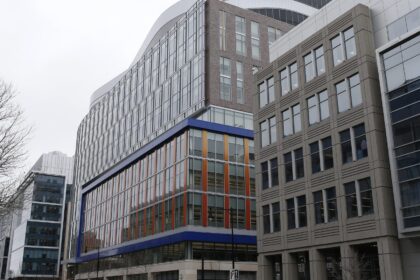Researchers at the University of Bonn have developed software that can simulate the growth of field crops. To do this, they fed thousands of photos from field experiments into a learning algorithm. This allowed the algorithm to learn how to visualize the future development of crop plants based on a single initial image. Using the images captured during this process, parameters such as leaf area or yield can be accurately estimated. The results have been published in the journal Planting methods.
Which plants should I combine in what proportion to achieve the greatest possible yield? And how will my crop develop if I use manure instead of fertilizer? In the future, farmers will increasingly have to rely on computer support to answer such questions.
Researchers from the University of Bonn have now taken a crucial step forward towards this goal: “We have developed software that uses drone photos to visualize the future development of the plants shown,” explains Lukas Drees from the Institute for Geodesy and Geoinformation out. at the University of Bonn. The novice researcher is an employee of the PhenoRob Cluster of Excellence. The large-scale project at the University of Bonn aims to promote the intelligent digitalization of agriculture and help agriculture become more environmentally friendly, without affecting crop yields.
A virtual look into the future to facilitate decision-making
The computer program that Drees and his colleagues are now presenting in the journal Plant Methods is an important building block. It should eventually make it possible to virtually simulate certain decisions, for example to assess how the use of pesticides or fertilizers will affect crop yield.
For this to work, the program must be fed with drone photos of field experiments. “We made thousands of images in one growth period,” the PhD student explains. “In this way, for example, we documented the development of cauliflower crops under certain conditions.” The researchers then used these images to train a learning algorithm. Then, based on one aerial photo of an early growth stage, this algorithm was able to generate images that show the future development of the crop in a new, artificially created image. The entire process is highly accurate, as long as crop conditions are similar to those at the time the training photos were taken. Consequently, the software does not take into account the effect of a sudden cold snap or persistent rain that lasts for several days. However, in the future the country should learn how growth is affected by such influences – and, for example, by increased use of fertilizers. This should make it possible to predict the outcome of certain interventions by the farmer.
“We also used a second AI software that can estimate various parameters, such as crop yield, based on plant photos,” says Drees. “This also works with the generated images. This makes it possible to estimate the final size of the cauliflower heads very precisely at a very early stage of the growth period.”
Focus on polycultures
One area the researchers are focusing on is the use of polycultures. This refers to sowing different species in one field, such as beans and wheat. Because plants have different requirements, they compete less with each other in such a polyculture than in a monoculture, in which only one species is grown. This increases the yield. In addition, some species – beans are a good example – can fix nitrogen from the air and use it as a natural fertilizer. The other species, in this case wheat, also benefits from this.
“Polycultures are also less susceptible to pests and other environmental influences,” Drees explains. “However, how well the whole works depends very much on the combined species and their mixing ratio.” When the results of many different mixing experiments are fed into learning algorithms, it is possible to make recommendations about which plants are particularly compatible and in what proportion.
Plant growth simulations based on learning algorithms are a relatively new development. Until now, mainly process-based models have been used for this. These – metaphorically speaking – have a fundamental understanding of what nutrients and environmental conditions certain plants need during their growth in order to thrive. “However, our software makes its statements exclusively based on the experiences they have collected using the training images,” Drees emphasizes.
Both approaches complement each other. If they were combined properly, this could significantly improve the quality of the predictions. “This is also a point that we investigate in our research,” says the PhD candidate: “How can we use process- and image-based methods so that they optimally benefit from each other?”





















